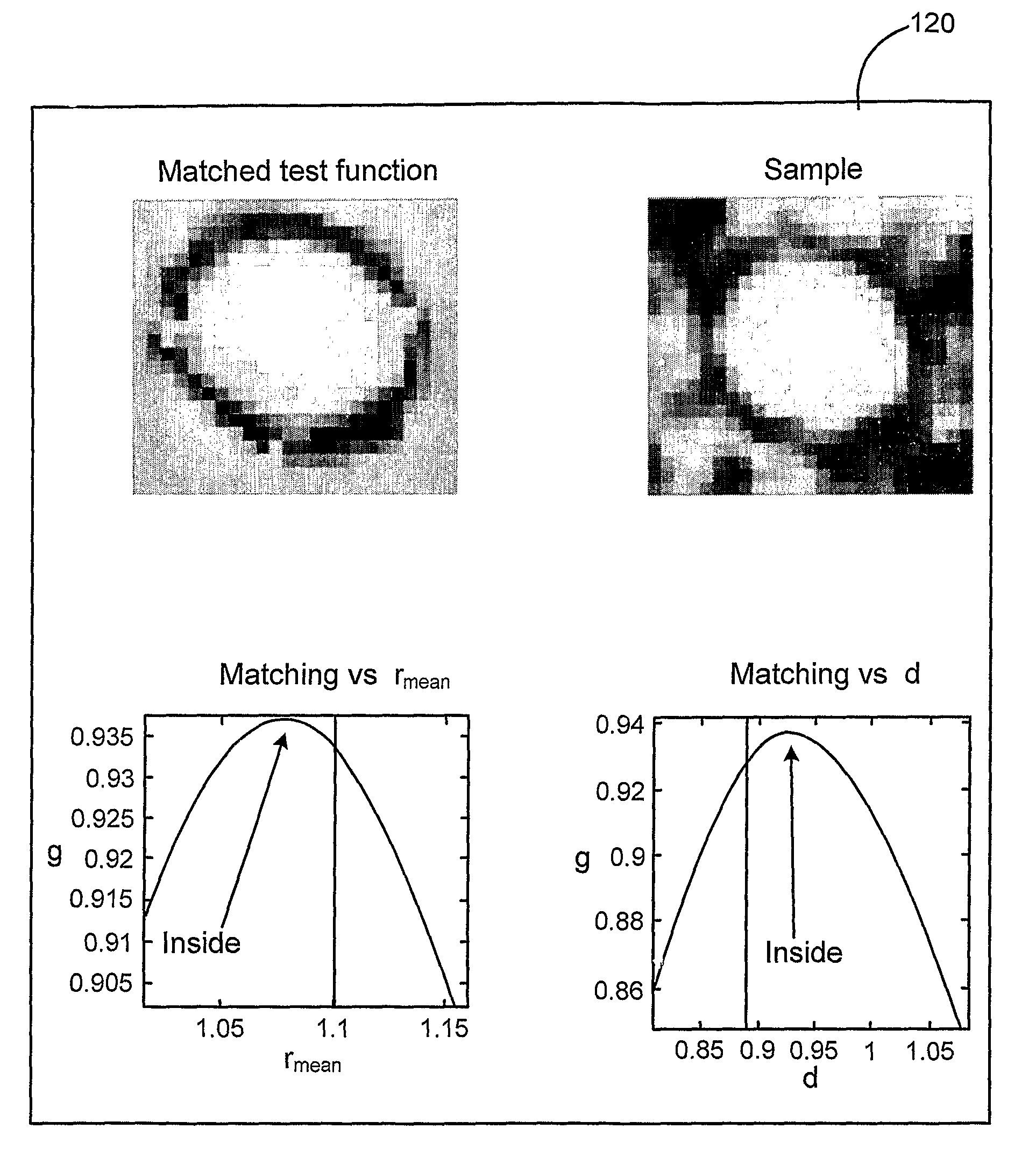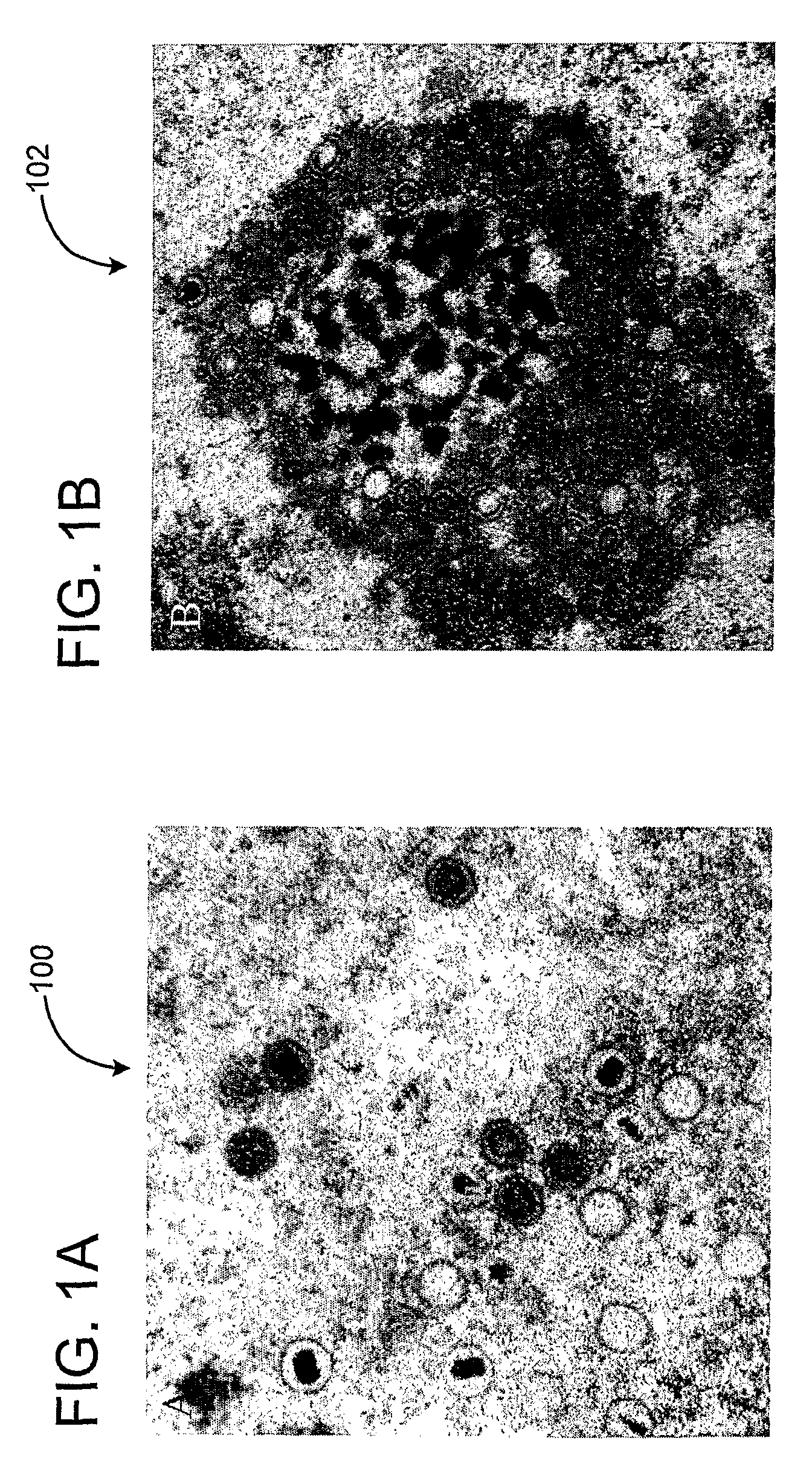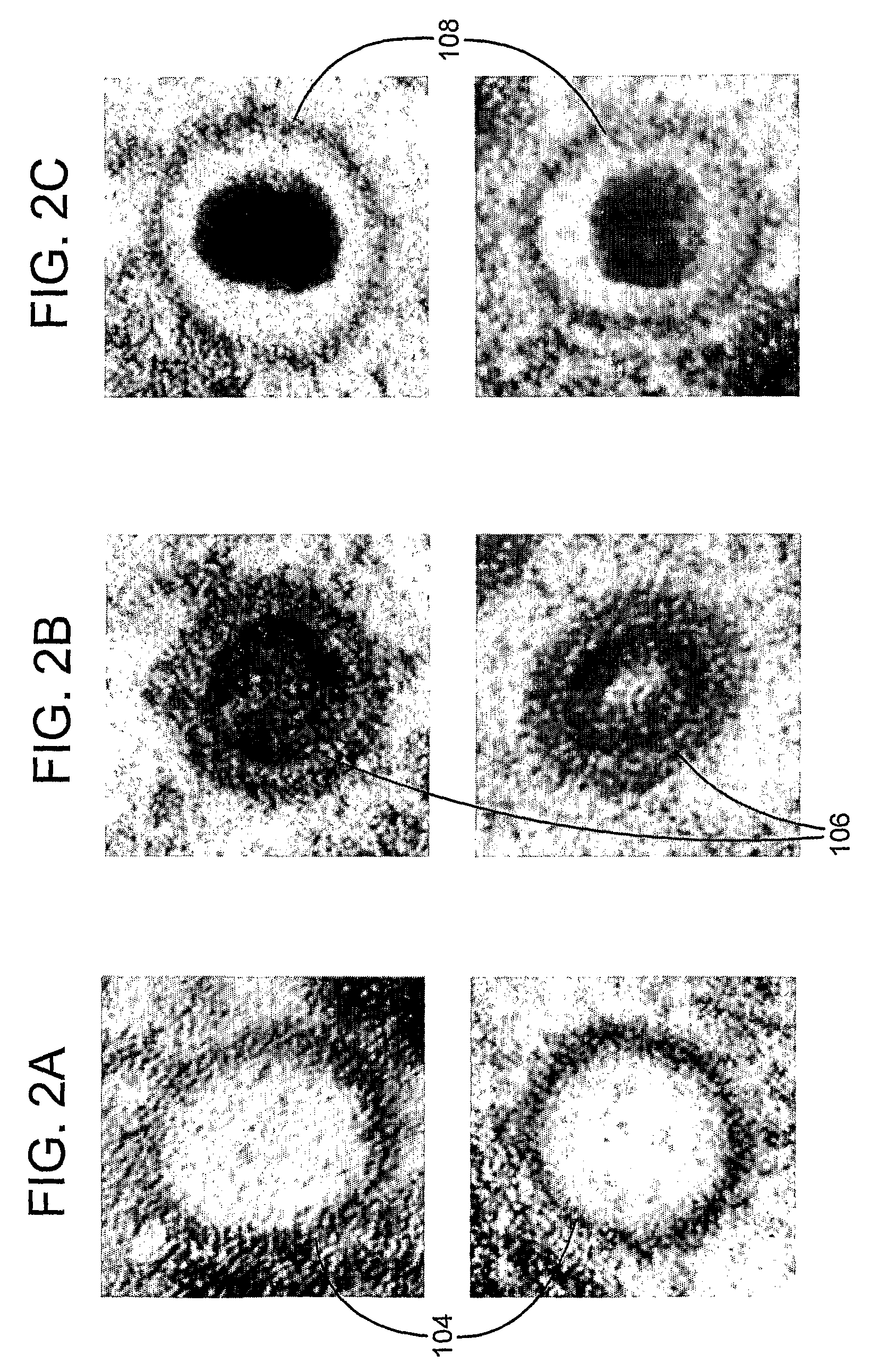Identification and classification of virus particles in textured electron micrographs
a virus and electron micrograph technology, applied in the field of image identification, can solve the problems of complex virus assembly process, subject of intensive research, lack of proper tools to characterize the structural effect,
- Summary
- Abstract
- Description
- Claims
- Application Information
AI Technical Summary
Benefits of technology
Problems solved by technology
Method used
Image
Examples
Embodiment Construction
[0020]The development of an automated system to assist in the identification of virus particles in electron micrographs is herein described. As a model, fibroblasts have been used that are infected with human cytomegalovirus (HCMV) a virus of the β-herpes class. It should be understood that the herpes virus is only used as an illustrative example and the invention is not limited to the herpes virus. During infection with human cytomegalovirus, many different intermediate forms of the virus particle are produced. During assembly of the herpes virus, the host cell is forced to make copies of the viral genetic material and to produce capsids, a shell of viral proteins, which encase and protect the genetic material. Capsids are spherical structures that can vary with respect to size and symmetry and may, when mature be enveloped by a bi-layer membrane. The maturation of virus capsids is an important stage in virus particle production, and one that is frequently studied. However, their a...
PUM
 Login to View More
Login to View More Abstract
Description
Claims
Application Information
 Login to View More
Login to View More - R&D
- Intellectual Property
- Life Sciences
- Materials
- Tech Scout
- Unparalleled Data Quality
- Higher Quality Content
- 60% Fewer Hallucinations
Browse by: Latest US Patents, China's latest patents, Technical Efficacy Thesaurus, Application Domain, Technology Topic, Popular Technical Reports.
© 2025 PatSnap. All rights reserved.Legal|Privacy policy|Modern Slavery Act Transparency Statement|Sitemap|About US| Contact US: help@patsnap.com



